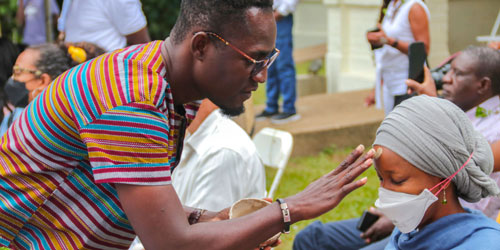MacArthur Staff Yvonne Darkwa-Poku, Janice Dunbar-Travis, Kalle Eko, Phillis Hill, Ken Jones, and Hauwa Kazeem share their intellectual and emotional reflections on the Advancing Justice: Reparations & Racial Healing Summit in Ghana.
Grantees funded by MacArthur’s Equitable Recovery Initiative convened in Accra, Ghana for the Advancing Justice: Reparations & Racial Healing Summit. It was an opportunity to identify how slavery, colonialism, and racism intersect and impact the lives of Black people across the world and are critical to making the case for reparations, fostering healing, and restoring dignity. It is against this backdrop that there is a call to action for global, federal, state, and local governments, universities, companies, and philanthropy to join the conversation and play a role in positioning reparations and racial healing as an issue that can be meaningfully addressed. A dozen MacArthur Staff members joined the summit, and a few share their experiences and reflections about the journey.
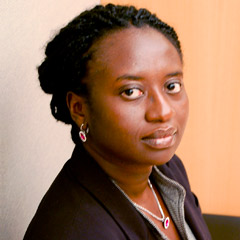
Yvonne Darkwa-Poku, Senior Program Officer, On Nigeria
The summit was a culmination of months of co-creation and a true manifestation of the principles of partnership, collaboration, and creative consensus-building. It was a gathering of Black reparations and racial healing movement leaders, activists, scholars, artists, policy makers, and youth from across the African continent and the global Black diaspora. As one of the elders of the movement said, it was one of the biggest gatherings of thought leaders in the reparation’s movement since the 1970s, with diverse representation from continental and global Africans. The attendance of the President of Ghana, His Excellency Nana Akufo-Addo, and the seminal keynote address he delivered, reverberated not just within Ghana but across the world.
Intellectually, the summit was a stimulating forum of ideas for a trans-continental reparations and racial healing agenda, with panel discussions ranging from “Making the Evidence-Based Case for Reparations” to “Freeing Ourselves from the Centuries-Old Lie of White Superiority and Black Inferiority”. It also provided the opportunity to engage in honest dialogue about intra-Black community racial healing and the need to build bridges between Africa and its descendants in the diaspora.
But the most memorable experience for me was going on a healing pilgrimage with my Black colleagues from the Foundation. The healing pilgrimages were both a solemn reminder of man’s inhumanity towards their fellow man as well as an opportunity for descendants to connect with their ancestors. We took our first pilgrimage to the origins of the transatlantic slave trade. In a quiet, single queue, we wrapped our hands in each other’s, our hearts beating to the sound of dried leaves, our feet burying their soles into the ground on the path our ancestors walked to take their last bath at Assin Manso. We re-enacted some elements of that tortuous journey and went through a cleansing in the same waters. We hugged each other, comforted each other, and provided shoulders for those who needed it. It was a heavy emotional burden to imagine, and an even heavier one to experience.
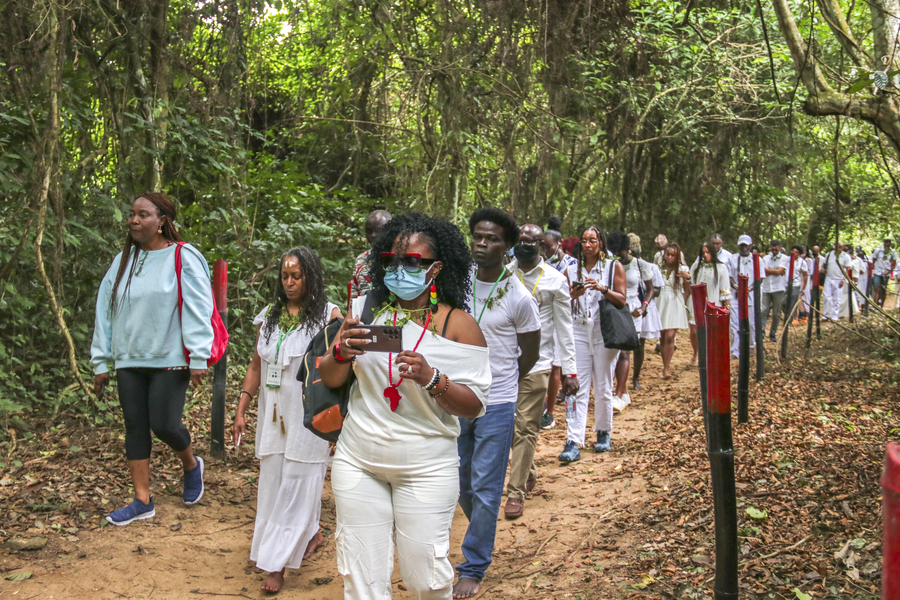
Summit attendees walk in a quiet queue on the path their ancestors traveled to take their last bath at Assin Manso.
From Assin Manso, we moved to the Cape Coast Castle and gently walked through the darkness of the slave dungeons where our ancestors were kept like animals and cargo. We were informed about the horrors they were subjected to and how those who tried to resist were tortured to death. We walked through the “door of no return” and re-entered together through “the door of return” to sit on a ledge in the courtyard of the slave castle where we stared silently at the roaring waters of the Atlantic Ocean where our ancestors journeyed into the unknown. As the waves splashed their remnants on the shores on the edge of the dungeons, we were forced to reflect on a range of emotions. The acknowledgement of our collective trauma; the reminder of our shared history; and the understanding that while we have been shaped by forced and other forms of separation, we remain as one people at our core and by our DNA.
Split the Castle open, find me, find you.
We, two, felt sand,
wind, air.
One felt whip. Whipped,
Once shipped.
We, two, black.
Me, you.
One grew from
cocoa's soil, birthed from nut,
skin uncut, still bleeding.
We two, wade.
The waters seem different
but are same.
Our same. Sister skin.
Who knew? Not me. Not you
― Yaa Gyasi, Homegoing
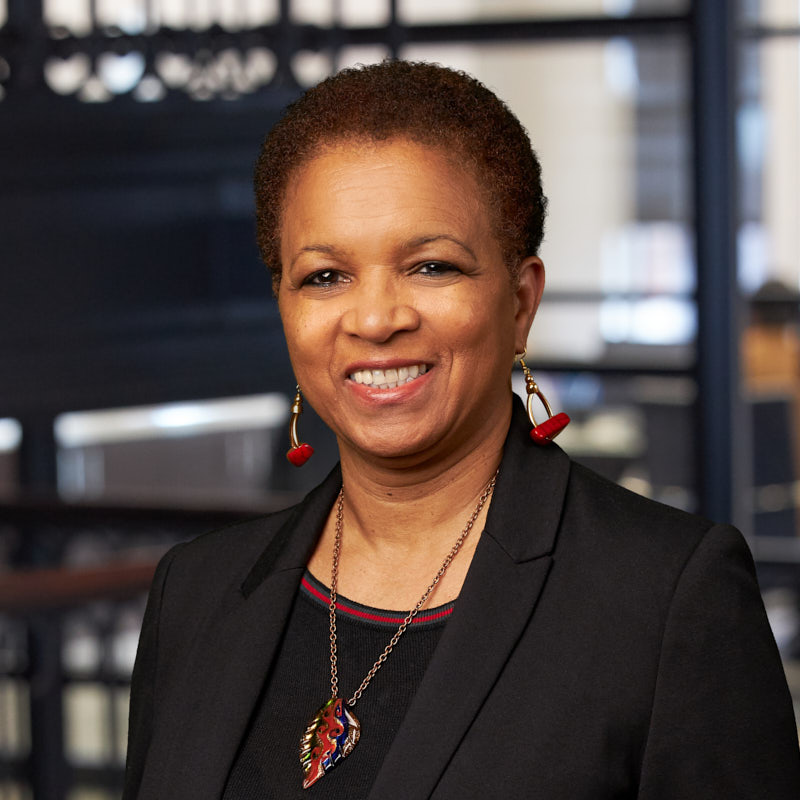
Janice A. Dunbar-Travis, Senior Grants Manager
As we flew over the Atlantic in the middle of the night, I could not help but envision the abusive journey my ancestors endured across this same ocean. This was my first trip to Africa, and it was emotional.
It was important for me as a Black woman to physically step on my ancestor’s land, to feel their presence, and to honor them. Black people around the globe have been through a tremendous amount of unacknowledged hurt and harm. Imagine being taken from your home to another land and viewed as property. I was looking forward to learning more and healing at the summit.
The sessions were informative. It was great to see Black people from different countries come together to talk about the need for reparations and the current state of the work. In the U.S., many view reparations as a monetary form of making amends, but this summit detailed that it is much more than that. There are so many untrue stories, laws, and structures that need to be changed that have continued to separate groups of people and allowed suffering for the advantage of others.
The pilgrimages allowed us to walk, with bare feet, along the same path as our ancestors; to step into the dungeons of our enslaved ancestors; to memorialize and honor those lost in the transit and those that made it to other lands. But we also had healing exercises to ground us in recognition of who we are—strong, loving, caring, beautiful, and intelligent people.
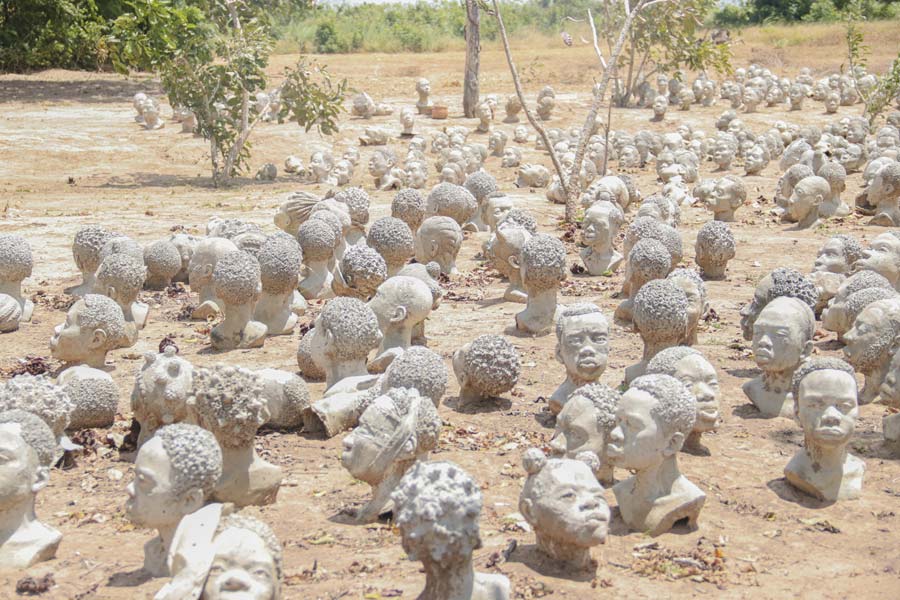
The “ancestors’ graveyard” at the Nkyinkyim Museum, which is archiving and preserving African history and cultural heritage.
For me, the summit validated, even more, the importance of reparations and healing, and although things will not change overnight, the work definitely needs to continue. The research and storytelling that was shared informed, challenged, and uplifted me. I know that movement for change is difficult if the problem is not acknowledged and addressed. To move forward and continue my healing, I vow to share my experience, the stories told, and research shared to educate others. I am grateful that I had an opportunity to share this experience with my MacArthur colleagues and others in the field.
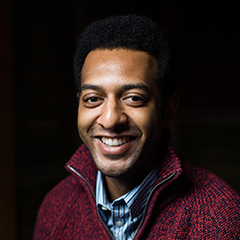
Kalle Eko, Digital Communications Associate
I am trained as a photojournalist to step back, observe, and capture what is happening. At MacArthur my role is to be in the background and showcase the work of our grantees on social media.
I tried to step back in Ghana, but the experience was too immersive and personal. As we visited sites like Assin Manso and Cape Coast Castle, I chronicled the journey while paying special attention to my colleagues who may have had ancestors pass through, in case they needed a hug or just a look of acknowledgment. We all felt the weight of the space, which illustrates how strongly the slave trade still reverberates and why people from the diaspora on both sides of the Atlantic are making the case for reparations after centuries of exploitation.
I was also reminded of how the African diaspora is as resilient and joyful as any in the world. We sang, and we danced. We built connections and formed community. I hope that through images and videos, the power of our experience reverberates well beyond this special summer week in Ghana.
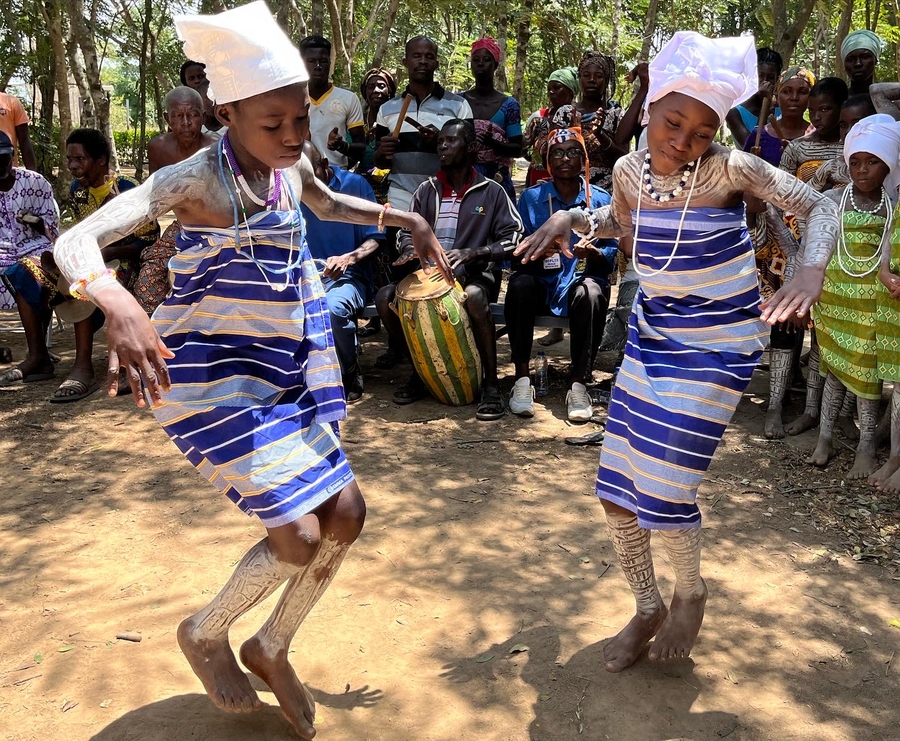
Girls greet visitors to the outdoor Nkyinkyim Musuem with a celebratory dance.
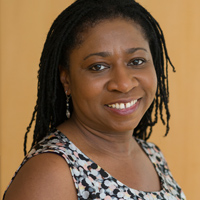
Phillis D. Hill, Senior Grants Manager
The Reparations & Racial Healing Summit was two years in the making. While working on the team of MacArthur Staff recommending grant recipients that work on racial justice as part of the Foundation’s Equitable Recovery Initiative, I have become more knowledgeable about the subject of reparations and the reasons that people are still fighting for it. As a child and as a young adult, there was always a nagging thought in my head about how this country, the USA, came to be the richest and most powerful on the planet. I knew in my heart of hearts that the enslavement of my ancestors for hundreds of years had to be a huge part of its wealth. I did not learn it in primary or secondary school and only got hints of it in college through elective courses. It was never made completely explicit to me, until the Nikole Hannah-Jones’ 1619 Project connected all the dots. The 1619 Project confirmed what I always felt to be true—that my ancestors, grandparents, parents, brothers, and sisters were not lazy, dumb, violent, and incapable of love. That was the lie that was needed in order to keep the enslaved and their descendants as an underclass.
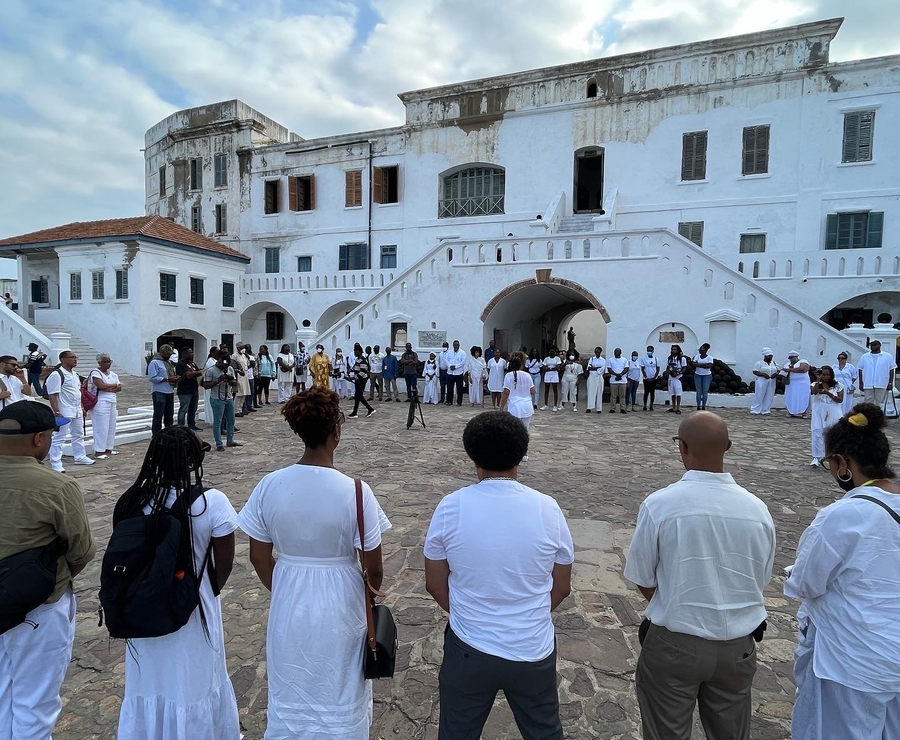
Summit attendees visit the Cape Coast Castle.
In this time of access to information, we are all learning more and more about the truth of what happened to the enslaved people in this country. It is difficult to face. At times I am filled with rage when I see that so many of my brothers and sisters in America still live on the worst land, breathe the worst air, and drink the worst water. People shrug and say, “that’s just the way it is,” or “those people just can’t get it together.” But now I know that is not the truth.
There are also times when I am filled with pride. Visiting the dungeons of the Cape Coast Castle and touching the walls where my ancestors suffered the most horrific conditions and survived so that I could live sent chills through my body. Visiting the dungeons was ten times more emotional than any exhibit that I have ever visited in any museum. I am filled with pride that they were strong, smart, kind, inventive, loving, and resilient. Understanding all the misery that they experienced at the dungeons, knowing all of the hell that they suffered as free labor in this country, and recognizing all of the times that they tried to build wealth only to have systems tear it down, I want them to know that I am grateful to them for surviving. I hope and pray that they are proud of the life that I am living.
Finally, I want to say that I am very fortunate to have an employer that cared enough about its Staff’s growth and personal well-being to make such a journey possible. I have learned so much and will continue to learn and grow out of this experience.
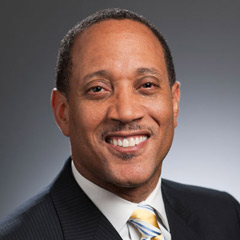
Kenneth Jones, Senior Vice President and Chief Operating Officer
As I reflect on the Reparations & Racial Healing Summit, numerous emotions and experiences come to mind that will last a lifetime. While I have been fortunate enough to have visited Africa previously and traveled to over 20 countries on the continent, this trek was completely different.
Ghana represented the last stop for my ancestors prior to being forcibly removed from their homes to set sail to the United States, the Caribbean, as well as South America. Visiting Cape Coast Castle, where hundreds of men and women were housed in dungeons at a time with limited light and where over 70 percent died in deplorable conditions, was emotionally draining, coupled with the irony that a church was above this facility. The “door of no return” was a stark reminder for generations to come. Dressing in white and coming together in a circle represented the unity that Black people must continue to pursue. One of the presenters coined the term “Global Africa” to suggest that all Black people are Africans regardless of where we live.
The next key takeaway came from the speakers at the conference. The realization about how much I need to learn and the information that has never been shared in our educational system serves as a reminder why the 1619 Project is needed. I took copious notes from the panels that I plan to follow up on and share with my friends and family members. The final observation was the personal relationships that I built with my MacArthur colleagues who were on the journey with me as well as colleagues from around the globe that I am fortunate to call my new friends. Akwaaba!
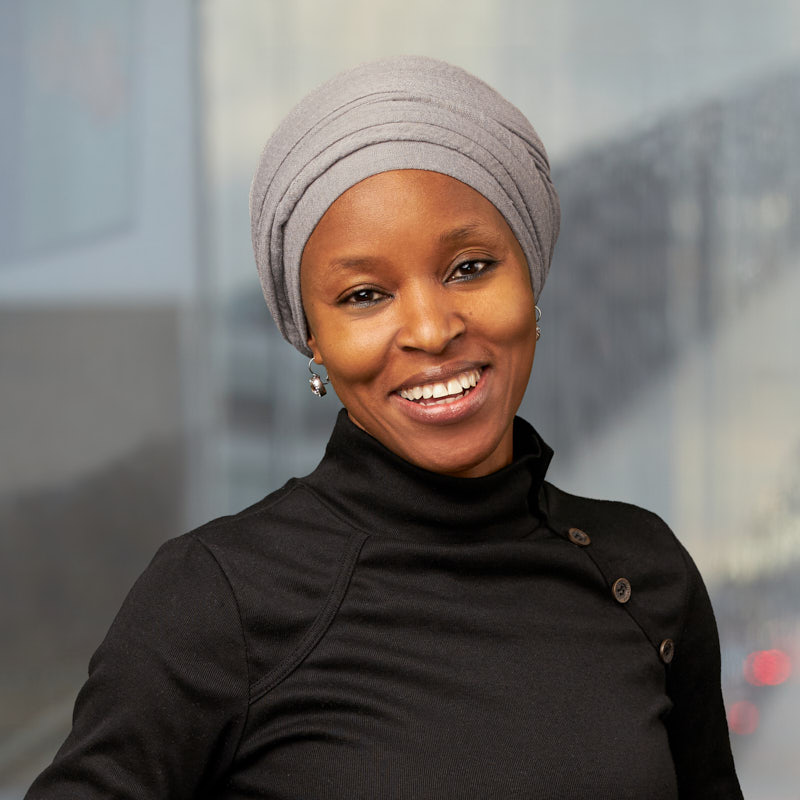
Hauwa K. Kazeem, Program Associate, Nigeria
Once I saw the summit program agenda, I was very excited about the sessions and anxious about the pilgrimages. The summit created brave spaces for honest conversations and shared learning to advance a reparations and racial healing agenda around the world.
A visit to Assin Manso and the Cape Coast Castle is nothing like the narrative that schools teach, or that we see in documentaries and movie adaptations of the transatlantic slave trade. It is one thing to read about it; it is another thing entirely to stand in the structures where our ancestors were enslaved.
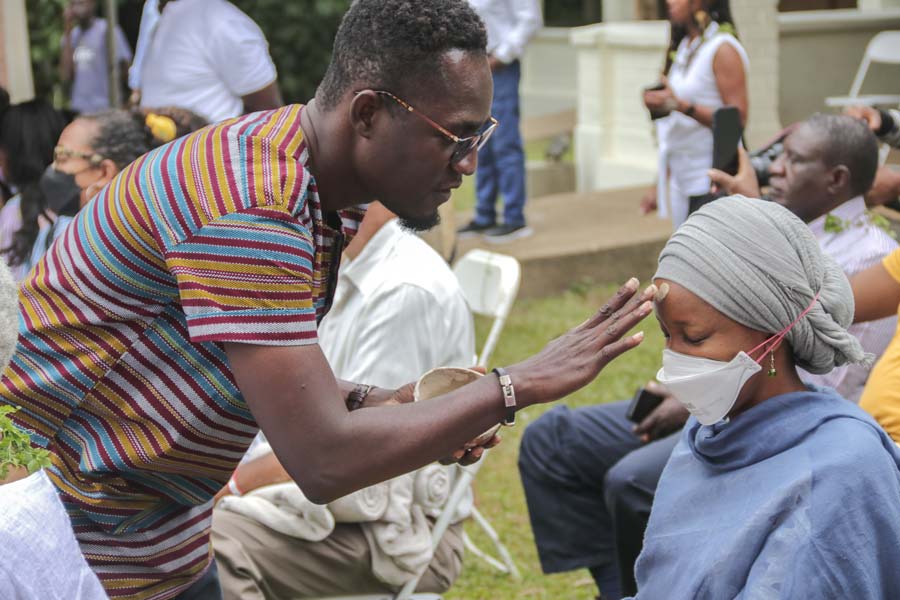
Program Associate Hauwa Kazeem is greeted during the welcoming ceremony at Assin Manso, where enslaved Africans took their last bath.
Our tour guide took us through the castle, sharing in graphic detail the inhumane conditions that our enslaved ancestors endured. To tour the castle is to smell the atrocities of the slave trade. I was overwhelmed with emotions; it was so much more than I had bargained for. There are no trigger warnings that can prepare you for how you are going to feel when you are standing in the dungeons. But I was comforted by colleagues who held my hands, reassuring me that I was not alone in this historic journey that reminded us of what our ancestors had to endure in order for us to be here today. To be able to talk about it and honor them is a privilege.
The trip has helped me to conceptualize slavery differently. To better understand that healing is a gradual process. It also provided an opportunity to bond with colleagues. Through the healing sessions that brought us together and reaffirmed the humanity in all of us. It is a trip that will have a lasting effect on me, and one that every African should make once in their lifetime.
Grantees funded by MacArthur’s Equitable Recovery Initiative convened in Accra, Ghana for the Advancing Justice: Reparations & Racial Healing Summit.



